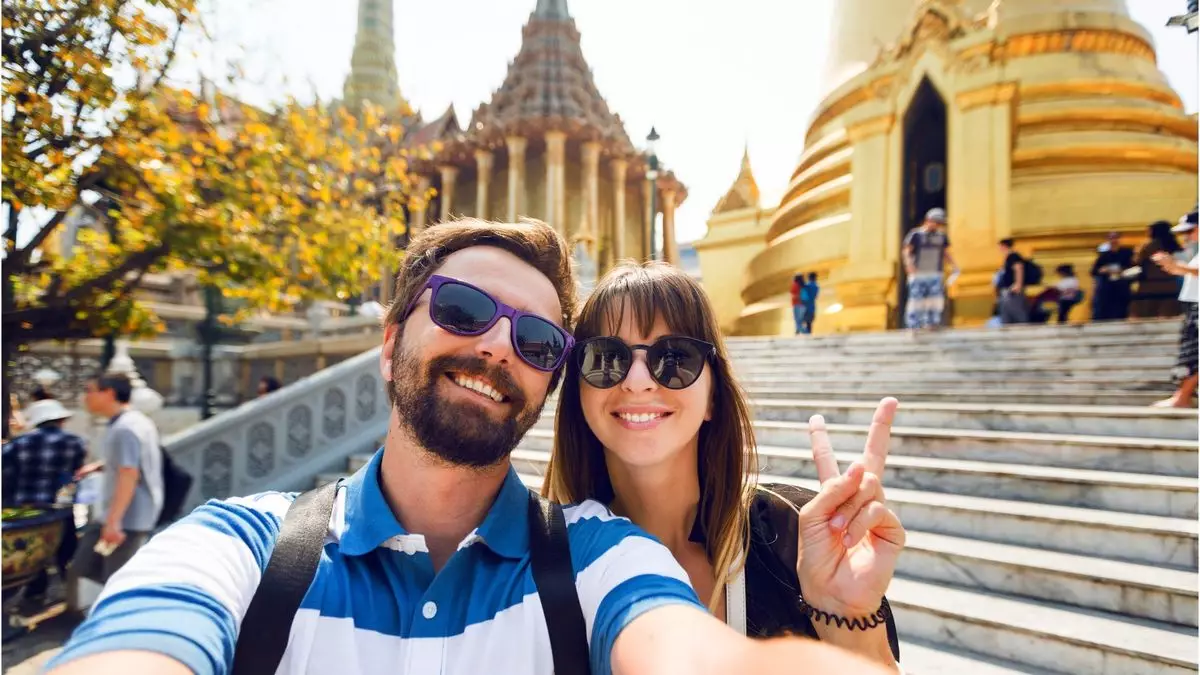The majestic Angkor Wat in Cambodia, recognized as a UNESCO World Heritage Site, is a testament to the region’s rich cultural heritage. This 12th-century temple complex has always attracted visitors from around the globe, particularly during the enchanting sunrise that casts its golden light upon the stone carvings. However, since the onset of the pandemic, the allure of this historic site is experiencing a shift. The gradual return of Asian travelers has yet to match the levels seen before COVID-19, resulting in a disparity where travelers from the West are enjoying a less congested experience. Sarah-Leigh Shenton, a marketing director at Red Savannah, revealed that ticket sales to Angkor Wat have only reached 45% of what they were before the pandemic. This decline can be attributed, in large part, to the significant absence of Chinese tour groups, who traditionally formed a substantial portion of the tourist demographic.
The tourism landscape in Asia is more complicated than it appears at first glance. While some markets are inching toward recovery, others remain slow due to various economic challenges like currency fluctuations and post-pandemic regulations. Notably, the absence of Chinese group tours has significantly impacted visitor numbers across Southeast Asia. A recent analysis by DidaTravel, a travel distributor based in Shenzhen, pointed out that while travel from China remains subdued, there has been a notable spike—200% increase—in travel from China to Japan. This resurgence is attributed to Chinese travelers seeking affordable shopping opportunities abroad as local economic conditions still discourage overseas adventures. Meanwhile, Japan’s own outbound tourism remains hampered by a persistently low currency value, making international travel an expensive undertaking for Japanese nationals.
Interestingly, even as the Chinese market begins to recover, travel patterns suggest a desire for closer, more affordable experiences. The China Youth Travel Service indicates a significant uptick in domestic travel, asserting that while there is enthusiasm to travel, many individuals are opting to stay closer to home. This trend speaks volumes about the economic realities faced by many potential travelers in Asian economies where local tourism continues to thrive. The preference for short-haul trips has emerged as a practical solution for many, reflecting an adaptive shift rather than a definitive retreat.
With Asian markets still recovering, the focus has shifted toward Western travelers exploring destinations within the region, such as Japan, Vietnam, and Thailand. Data from Alexander + Roberts reveals a staggering 41% increase in travel bookings to Asia in 2024 compared to the previous year, indicating a robust appetite for exploration among North American tourists. Southeast Asian countries are seeing a resurgence in bookings as more travelers opt for regional multi-destination trips, combining experiences across Vietnam, Cambodia, and Thailand. Scott Avera, president of Alexander + Roberts, notes that post-pandemic travel behavior has pivoted from singular destinations to multi-destination itineraries, reflecting a broader interest in diverse experiences.
While North American travelers are flocking to Japan for its rich culture and historical sites, the travel experience is becoming less budget-friendly. Catherine Heald, co-founder of luxury travel operator Remote Lands, underscores that although Japan boasts attractive pricing on transport, the costs associated with comprehensive luxury services—from accommodations to personalized tours—have surged notably. Many travelers may find that the high-end experience does not align with their expectations of affordability, potentially leading to disappointment when planning their trips.
Cruising along the Mekong River has emerged as a captivating alternative for tourists eager to explore Southeast Asia. Companies like AmaWaterways have reported full bookings for trips running from November through April, indicating a strong recovery of interest in river cruises that showcase the region’s natural beauty and cultural richness. As a response to the increasing demand, AmaWaterways is expanding its fleet with the introduction of a second ship on the Mekong, scheduled for 2026. This move signifies a broader trend of travelers seeking immersive experiences that blend culture, local traditions, and picturesque landscapes.
Post-pandemic travel is marked by significant shifts in visitor profiles and preferences. With Angkor Wat still serving as a captivating entry point into Southeast Asian tourism, the region is undoubtedly at a crossroads. The challenges faced by traditional markets such as China and Japan illustrate the complexity of the recovery journey. In contrast, Western tourists are seizing the opportunity to explore Asia’s treasures, albeit at increased costs. As the travel industry continues to adapt to these new dynamics, understanding these evolving patterns will be crucial for creating enriching experiences for all types of travelers. The future of travel in Asia is not just a return to the past; it’s an exciting evolution marked by fresh opportunities and transformed experiences.

